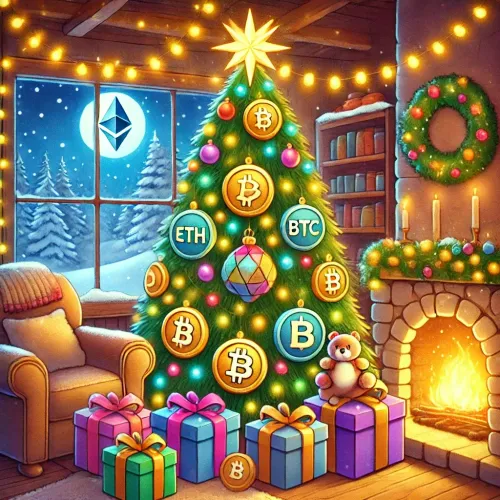Coming into September, the long awaited ETH 2.0 merge comes into direct focus now, likely to be somewhere around September 14/15.
Into this event, we have seen ETH rally 120% trough-to-peak since the June 18 $880 low, amidst a growing bullish chorus related to the changing supply dynamics of the new PoS vs. the current PoW.
Nonetheless, in the context of the broader market moves, neither the magnitude or timing of this rally was idiosyncratic to ETH as most assumed. Rather, it was just a correction of its oversold Q2 decline (3AC liquidation related) relative to other macro assets, including its big brother BTC.
What hasn’t changed is that ETH remains a great high beta play for investors to express their macro views.
What the Fork!
Feel the (Winter) Burn
The uber-bullish ETH thesis is that ETH 2.0 will immediately herald a new era of deflationary supply for ETH. However this is not entirely true, for now at least.
There are 2 sides to this supply equation - one side is ETH issuance, which will dramatically fall with the switch from PoW to PoS; the other side is the ETH burn rate, which is entirely dependent on usage and adoption. The more usage, the more burn.
On the issuance side, ~5m ETH/year is currently paid as fees to miners on PoW. This will fall to ~1m ETH/year paid as rewards to stakers on PoS, the exact number determined by the amount of ETH staked by validators. More stakers secure the network, but will also be paid more rewards. Nonetheless this is bullish as ETH issuance will dramatically decline irregardless.
However, where the bullish kicker will come is in the burn rate - which in the midst of winter, is not looking so bullish right now.
The daily run rate of ETH burn has declined to just ~1,200 ETH/day this month, less than a quarter of what was being burned last August when EIP-1559 was implemented, and only 9% of what was burned in January.
This means that at the current burn rate, and assuming ~25% of the 120m ETH supply is staked - we will have an in- flation supply of ~1%/year, compared to a deflationary supply of ~2% per year if we just revert to the all-time high burn rate.
This doesn’t change our view on the long-term viability of ETH, and its consequent bullish impact on price. We think ETH will be THE asset of the decade. However, it does change the short-to-medium-term price dynamics, and how much of the event is already priced in.
The reason for this drastic decline in burn is that even as total usage has declined, the proportion of ETH usage across segments has remained surprisingly consistent: 50% comes from NFTs, 40% from Defi and 10% everything else.
With 90% of ETH usage still coming from NFTs and DeFi, there are only 2 scenarios where the bull thesis can play out and ETH outperforms from here. Either a dramatic pick-up in DeFi and NFT usage, or for more use cases to develop.
Both remain very unlikely in the foreseeable future. DeFi yields are rock bottom, and PFP project hype similarly flatlining. On the use case side - certainly a development of NFTs away from purely PFPs (profile pictures), and participation in DeFi for a broader real world asset group will set the stage for the next wave of adoption. Unfortunately, this too will take time.
In the near-term therefore, it is wisest to treat this event as a historic milestone in setting the stage for the multi-decade future of ETH, but continue treating ETH as the high beta macro play in the near-future.
The Unthinkable Flippening
While ETH bulls await their flippening (ETH market cap surpassing BTC), quietly in the background another more om- inous flippening has occurred.
Nothing speaks of DeFi and crypto winter more than the below chart - showing how TradFi USD benchmark overnight lending rates (SOFR) have now exceeded both its crypto DeFi (Aave) and CeFi (FTX) counterparts!
From the lofty 30-40% DeFi USD lending yield, to the 20-25% FTX floating USD rate early last year, to the current paltry 1.4% for Aave (USDC) and 1.71% for FTX (USD), versus 2.33% on the SOFR now (which will keep increasing in- line with the Fed rate to ~4%).
Halving Cycles
The jury is out on whether the ETH merge will have a positive effect on price, similar to the BTC “halving” effect. The halving pattern is firmly established for BTC (Chart 5) and the next halving will be around May 2024.
The takeaways from the BTC halving pattern:
- In the log chart below, every halving cycle’s peak is exponentially less than the previous ones - which certainly rules out the $1m BTC target many BTC bulls have for the next halving cycle. Based on this, $100,000 seems a more realistic target to aim for.
- This cycle, we have thus far bottomed exactly in-line with the 1st halving cycle (blue line), measured in number of days post-halving (1st red line).
- This cycle, we topped at the same time as the 2nd halving cycle (orange line). If we follow the 2nd cycle’s pattern, then the market is setting up for a sell-off following the ETH merge before the bottom 888 days post-halving (2nd red line) - coming in around mid-Oct this time.
- However in both cycles, the bull run (green line) starts roughly 1000 days post-halving. For this cycle, it comes in Feb 2023.
Macro Charts
Bullish Positioning
Leveraged funds have both been reducing outright longs (blue line) and increasing shorts (purple line) into this latest rally, at the fastest rate of change in over a decade!
The showdown between macroeconomic conditions and market positioning will come as soon as September - in determining whether bearish macro forces play out as the market hopes, or whether we are setting ourselves up for a squeeze of historic proportions. While the pain trade is certainly equities higher, should CPI come in stronger than expected we will likely begin Wave 5 lower following that.
Bearish Analogue
Based on the 2008 bear market precedent, we are setting up for a steep 5th Wave lower in Q4.
In 2008, equities topped at the 200 daily MA (orange line), before proceeding to decline 53.7% over the next 9 months. This correction topping pattern has eerie echoes to how we topped last week in the S&P 500 index - failing exactly at the 200 MA, and the prior horizontal supports turned resistance (blue channel).
This makes the September NFP+CPI dataset crucial for all macro markets. Powell in his Jackson Hole speech inadvertently told markets that the Fed has handed its policy decision to these two releases, and that is how the market will trade it. On the flip side, should data be positive for markets, the resultant short squeeze above the 200 MA will also be something to behold - possibly even taking equities back up to close to flat for the year!
Bearish Seasonality
September is the worst month seasonally for crypto assets.
Since 2016, BTC and ETH have ended September down 5 of the past 6 years. ETH in particular has declined at least 20% each time in September, a bearish foreboding for post-merge price action.
Trades Update (Open Trades)
- The market is currently pinning to our short ETH 1.5k ERKI strike - where there is a window of doom between the long 1.4k Put strike and the short 1.5k ERKI strike.
- We are as conflicted as the market - with macro conditions pointing to a lower market, while positioning argues for a continued wave 4 squeeze higher (the direction we are more leaning towards right now).
- This month we hold off on any new trades, letting the pivotal September point the next direction. Everything will depend on 2 Sep NFP, 13 Sep CPI, and 14/15 Sep merge.



